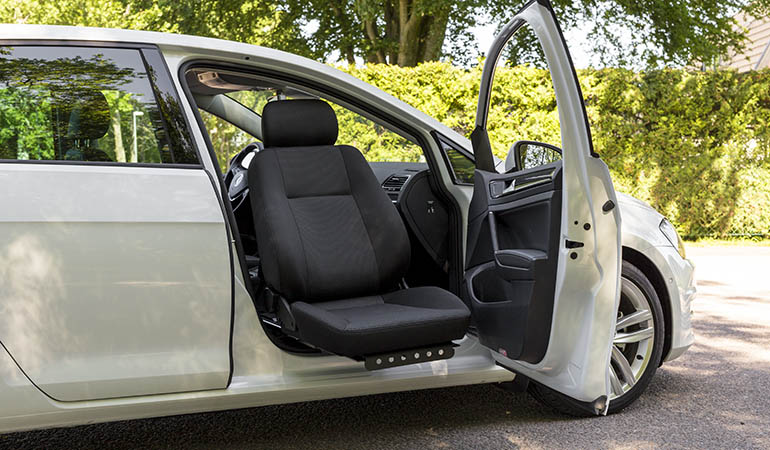
Seat lift/Swivel seat
This device rotates the seat and brings it either fully or partially outside the vehicle. For the actual transfer, the benefits are very similar to those of the Transfer board. You have a stable point to hold onto during the transfer, and you do it outside the car. But it's from here on that both the Seat Lift and the Swivel seat have more to offer.
Swivel seat = Rotation
The standard Swivel seat rotates the seat, bringing its front over the sill, effectively shortening the gap you need to traverse. After a short transfer over to the front edge of the car seat, scooch back and rotate into the car.
Since you transfer directly to the seat, you get a larger area to land on. And since you're already in the seat, you can use the backrest for stability and support.
Some Swivel seats extend the car seat further out, making the transfer even shorter and giving you a larger area to sit down on.
As with the Transfer board, the aim is to keep the transfer as horizontal as possible. Because of this, Swivel seats are primarily used for low built cars such as sedans and hatchbacks.
Swivel seats come as both fully hand-operated as well as in powered versions. A Swivel seat is sometimes referred to as a Swivel base.
Seat lift = Rotation + Lift
For high built cars such as SUVs, Vans and 4x4s, a Seat lift is a better choice. Here, the entire seat is brought out of the car and down to your level. You get all the benefits of the Transfer board and Swivel seat but at the perfect height for you. Transfer over to the car seat, lean back and let it lift you into the vehicle.
Seat lifts are usually fully powered, although some have manual seat rotation.
Pros
- + A Seat lift is the only choice for a high built car.
- + Requires less muscular strength and core stability than a Transfer board.
- + Available with both powered and manual operation.
- + Does not prevent anyone else from using your car.
+ Installation is many times completely reversible.
Cons
- - For safety reasons, a Seat lift/Swivel seat need a specific seat.
- - More expensive than a transfer board.